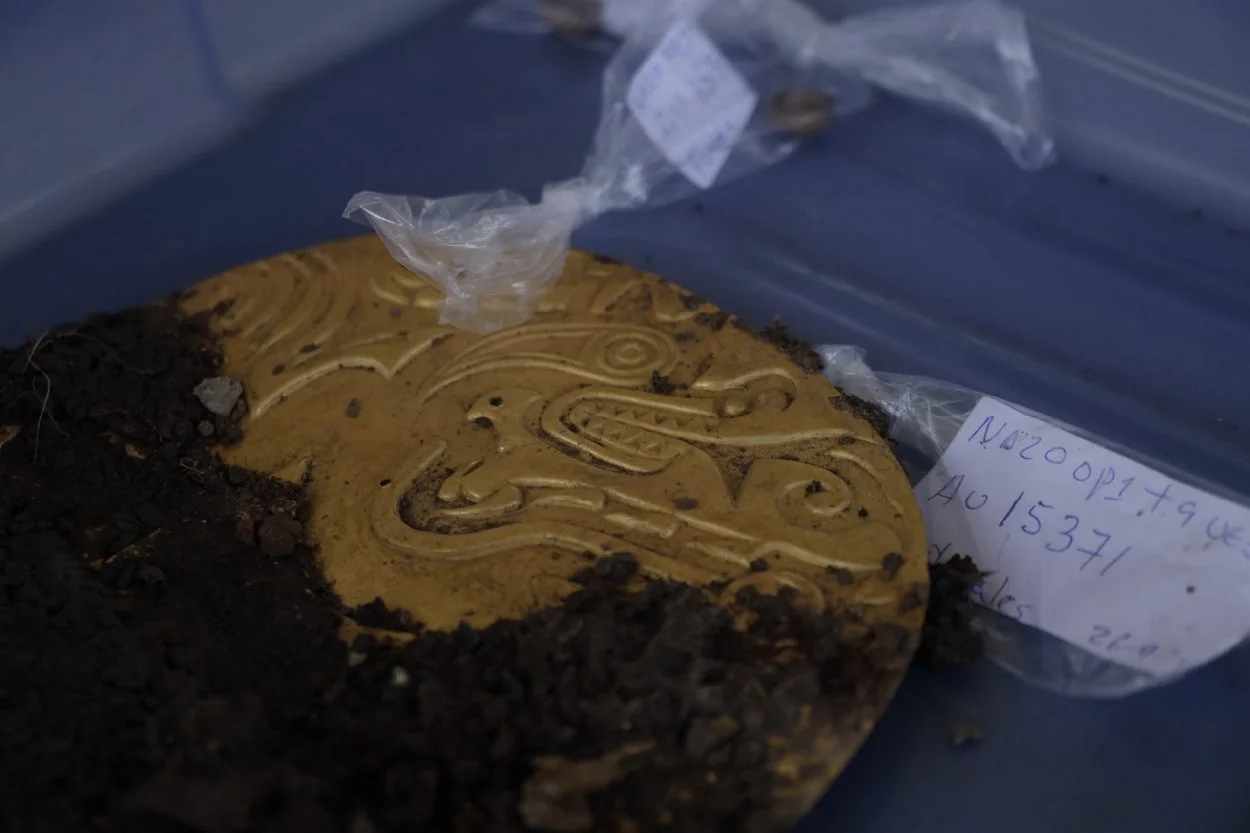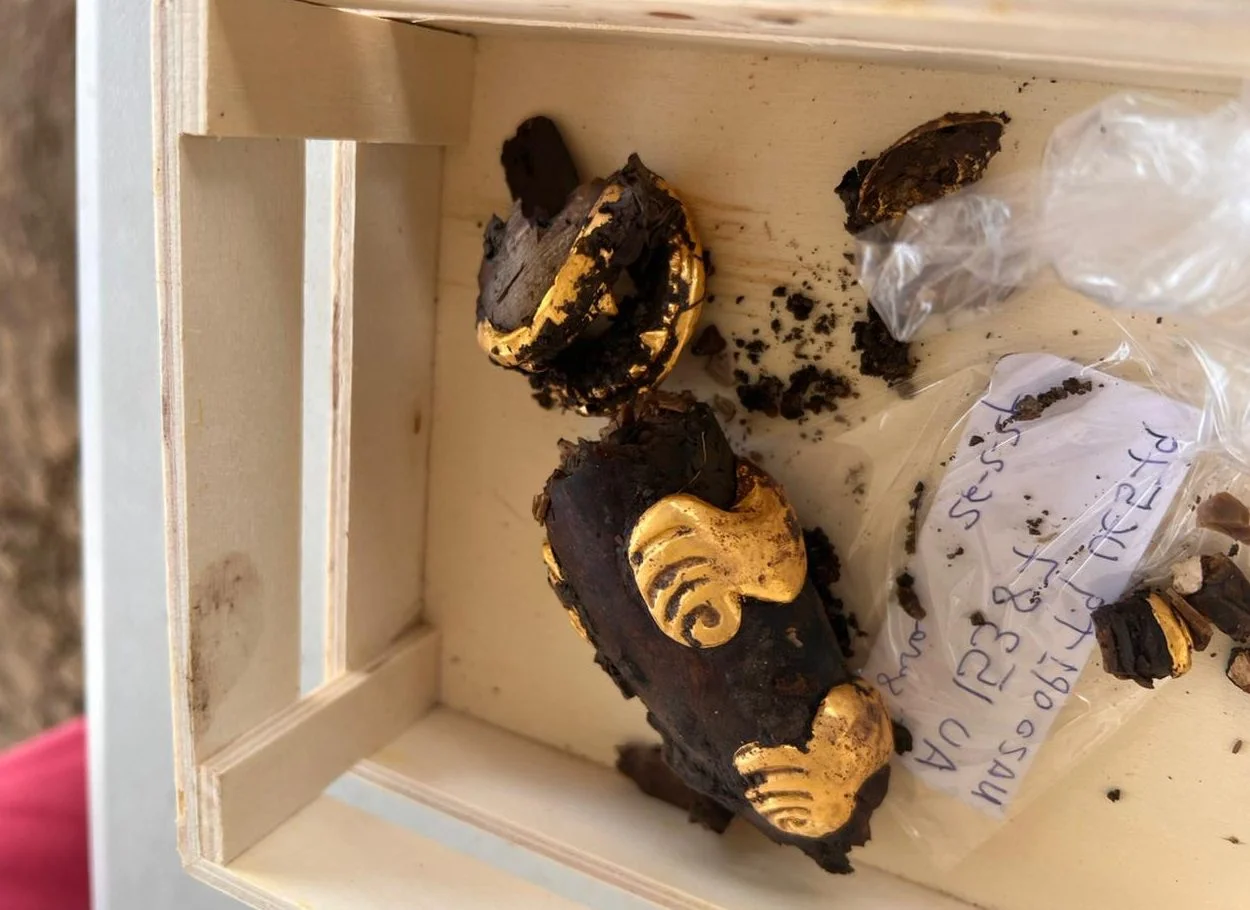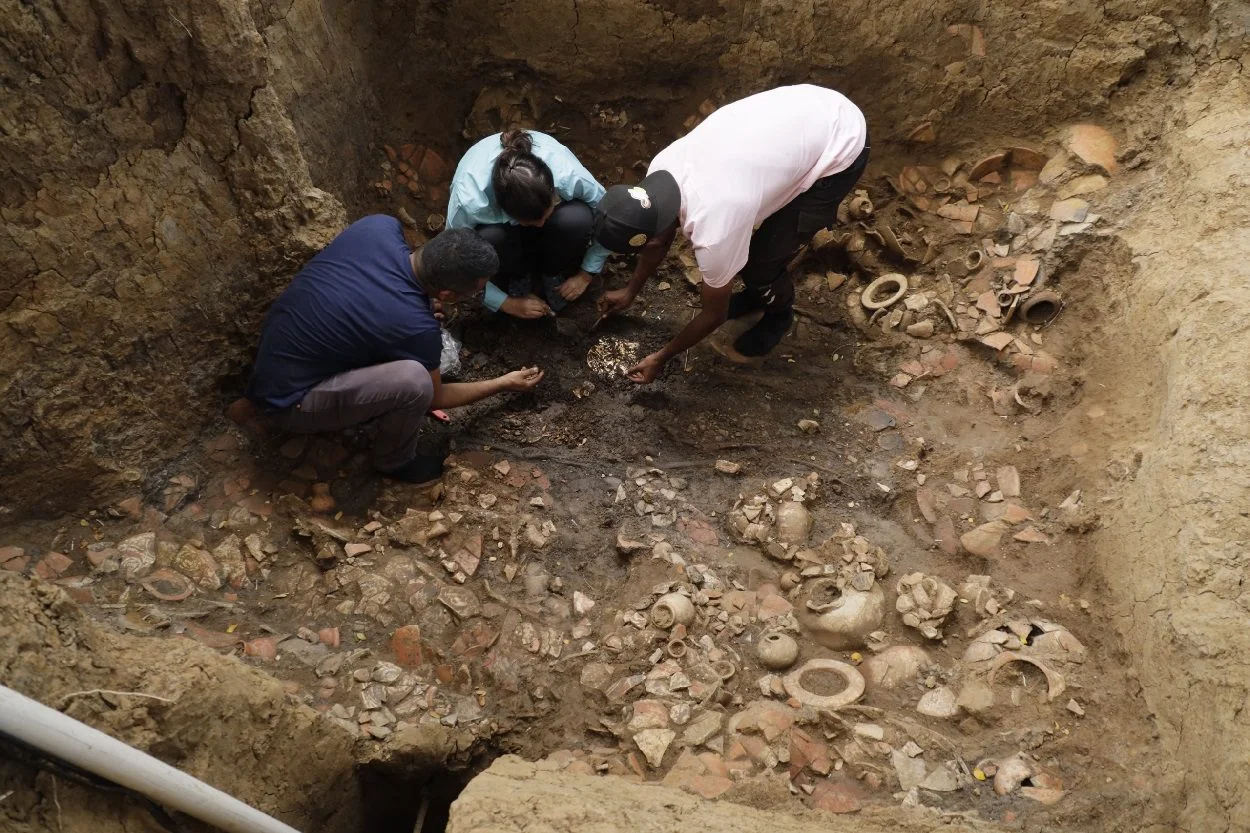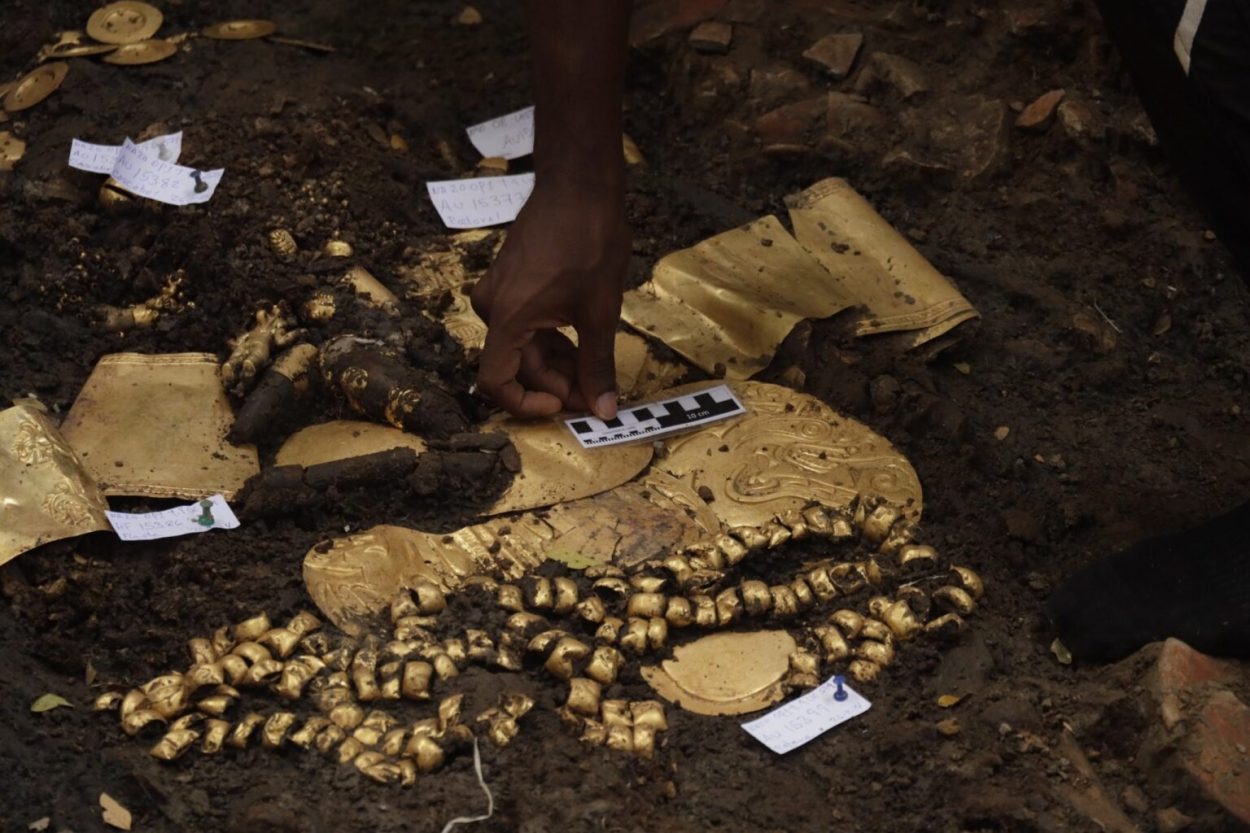Archaeologists have discovered a high status tomb containing funerary offerings of ceramic and gold artefacts during excavations at the El Caño Archaeological Park.
El Caño Archaeological Park is one of Panama’s most important archaeological sites, located in the area of El Caño in the Coclé Province of Panama. The park contains a necropolis of tombs and stone monoliths that date from between AD 700 to AD 1000.
The site was first discovered in 1925, when American explorer, Hyatt Verrill, uncovered three burials after stumbling across ancient monoliths protruding from the ground along the banks of the Rio Grande River.

The first formal investigation took place during the 1970’s following research into accounts written by Spanish Conquistadors. The Spanish described a civilisation ruled by a number of elites who differentiated themselves from lower ranks by wearing golden chest plates, and a rich industry of artisans that crafted ornate objects made from gold.
According to a press announcement by the Ministry of Culture of Panama, archaeologists have discovered a tomb (designated Tomb No. 9) which contains the remains of a Coclé lord and numerous funerary offerings.

Excavations have so far uncovered 5 pectorals golden plates, 2 belts of spherical beads made from gold, 4 bracelets, 2 earrings in the shape of human figures, an earring depicting a double crocodile, 1 necklace of small circular beads, 5 earrings made from the teeth of a sperm whale, a set of gold plates, two bells, bone flutes, bracelets, and hundreds of ceramic objects.
Dr Julia Mayo, director of the El Caño Foundation, told HeritageDaily: “The tomb was built around the year AD 750 and contains the remains of a Coclé lord, but also has other burials who died to accompany him to the afterlife.”

Dr Mayo explained that excavations of the tomb remains incomplete, thus making it currently impossible to ascertain the total number of individuals interred alongside the Coclé lord. However, what is established is that he was buried in a face-down position, a customary burial practice within this society, usually atop the remains of a woman.
Header Image Credit : Ministry of Culture of Panama
Sources : Ministry of Culture of Panama – Important tomb with sumptuous gold outfits discovered in el caño archaeological park





